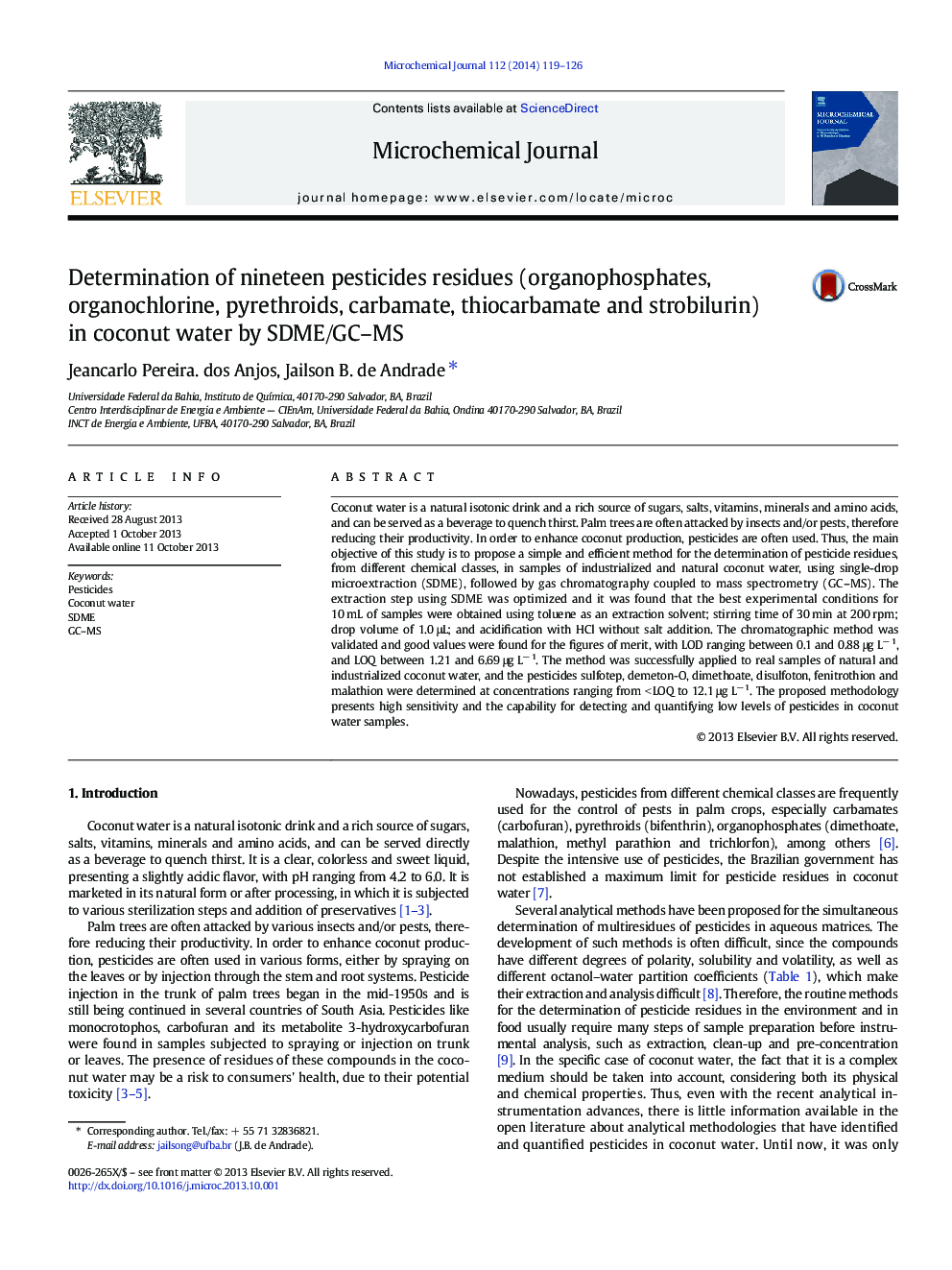| Article ID | Journal | Published Year | Pages | File Type |
|---|---|---|---|---|
| 7643392 | Microchemical Journal | 2014 | 8 Pages |
Abstract
Coconut water is a natural isotonic drink and a rich source of sugars, salts, vitamins, minerals and amino acids, and can be served as a beverage to quench thirst. Palm trees are often attacked by insects and/or pests, therefore reducing their productivity. In order to enhance coconut production, pesticides are often used. Thus, the main objective of this study is to propose a simple and efficient method for the determination of pesticide residues, from different chemical classes, in samples of industrialized and natural coconut water, using single-drop microextraction (SDME), followed by gas chromatography coupled to mass spectrometry (GC-MS). The extraction step using SDME was optimized and it was found that the best experimental conditions for 10 mL of samples were obtained using toluene as an extraction solvent; stirring time of 30 min at 200 rpm; drop volume of 1.0 μL; and acidification with HCl without salt addition. The chromatographic method was validated and good values were found for the figures of merit, with LOD ranging between 0.1 and 0.88 μg Lâ 1, and LOQ between 1.21 and 6.69 μg Lâ 1. The method was successfully applied to real samples of natural and industrialized coconut water, and the pesticides sulfotep, demeton-O, dimethoate, disulfoton, fenitrothion and malathion were determined at concentrations ranging from < LOQ to 12.1 μg Lâ 1. The proposed methodology presents high sensitivity and the capability for detecting and quantifying low levels of pesticides in coconut water samples.
Keywords
Related Topics
Physical Sciences and Engineering
Chemistry
Analytical Chemistry
Authors
Jeancarlo Pereira. dos Anjos, Jailson B. de Andrade,
